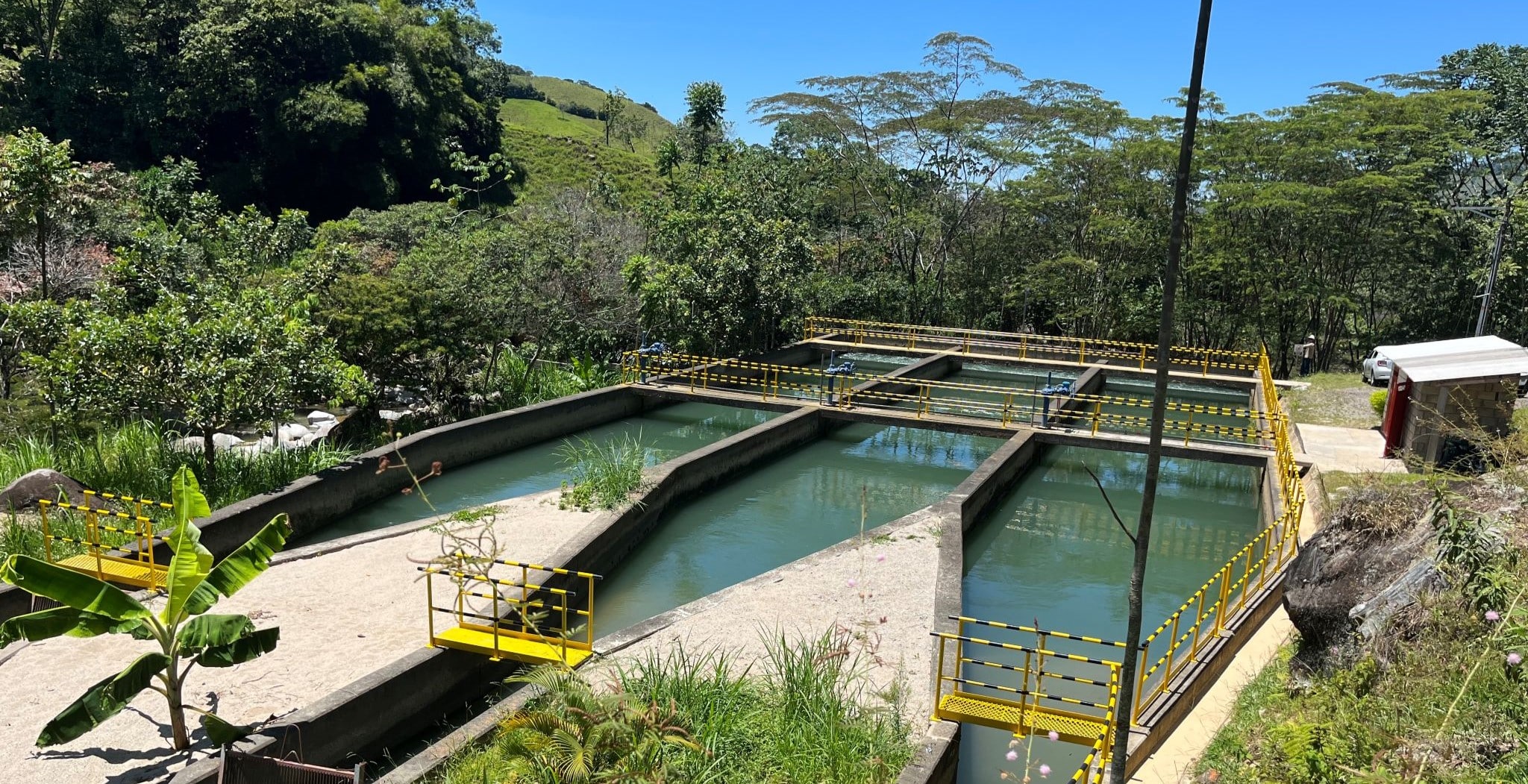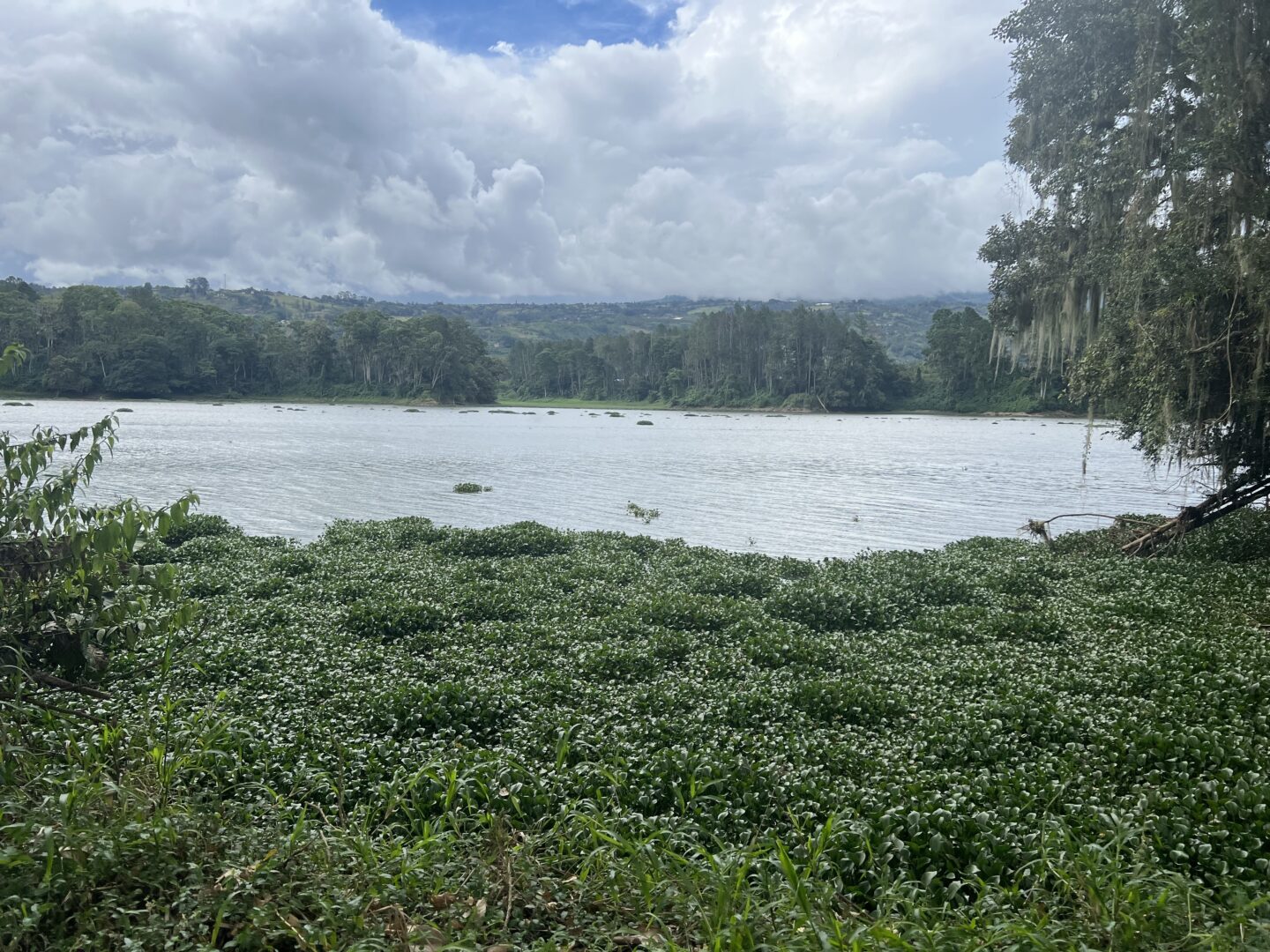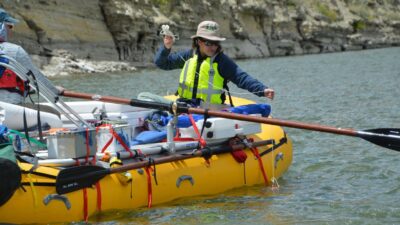Nature-based Solutions Can Support Climate-resilient Hydropower in Colombia and Costa Rica

This blog was originally posted in Spanish by WRI Colombia.
Latin America and the Caribbean (LAC) stands out globally on renewable energy: over 60% of energy generation in the region comes from renewable sources, making its energy sector one of the least polluting worldwide. A key component of this achievement is the predominant use of hydropower, which represents approximately 45% of total electricity generation in the region.
Colombia and Costa Rica are among the countries most dependent on hydropower for their electricity supply. In Colombia, under normal climate conditions, hydropower accounts for 64% of energy production. Costa Rica follows a similar trend, with 67% of its electricity generated by hydropower plants in 2023.
However, despite their low-carbon energy generation, one of the biggest challenges to ensuring hydropower generation in Colombia and Costa Rica is the high vulnerability of these countries to climate change. According to Colombia’s Third National Communication and Costa Rica’s Fourth National Communication on climate change, significant changes in precipitation patterns and river flows are predicted for both countries, which could affect energy generation capacity and energy security in the region. Furthermore, climate impacts may lead to increased reliance on carbon-intensive energy sources, such as fossil fuels, as is currently happening in Colombia due to water shortages.
Among the most important regions for hydropower generation in Colombia are Antioquia, Cundinamarca, Santander, and Tolima Grande. These regions are located in the Magdalena-Cauca macro-basins, which host a large portion of the country’s hydropower generation. These areas are expected to face the greatest impacts from water shortages related to climate change and variability. Meteorological phenomena like El Niño, declared in Colombia in November 2023, severely impacted the country in 2024. Low precipitation levels have affected the reservoirs used for electricity generation, leading to increased energy prices that impact consumers. This is also happening as rising temperatures drive up energy demand.
In Costa Rica, key rivers for hydropower generation, such as the Tortuguero and Reventazón, are also at risk. Climate impacts are causing precipitation variability and drastic changes in these river’s water flows.
In light of this situation, nature-based solutions emerge as a promising complement to address the challenges associated with climate change, enhance the resilience of hydropower systems, and benefit local communities in Colombia, Costa Rica, and the entire LAC region. This understanding recognizes that the impacts of climate change extend beyond energy-generating companies to energy consumers, including communities located in the influence zones of energy generation plants, who are also affected by climate change.
Nature-Based Solutions: An Opportunity for Climate Change Adaptation in the Hydropower Sector
Nature-based solutions have been recognized by the United Nations Environment Assembly as a key tool for addressing social, economic, and environmental challenges. These solutions focus on the protection, restoration, and sustainable management of ecosystems, offering a range of benefits that can improve the climate resilience of the hydropower sector.
Different types of nature-based solutions exist, including green infrastructure and ecosystem-based adaptation. These solutions are particularly useful in the hydropower context as they help manage water resources more efficiently and sustainably, reducing adverse effects of climate change.
Some benefits that nature-based solutions can offer to hydropower companies and nearby communities include:
- Reduction of sedimentation in reservoirs, ensuring better water supply which can extend the lifespan of dams and decrease maintenance costs.
- Improvements in water regulation, ensuring greater stability in energy generation throughout the year.
- Reduction of vulnerability and climate risk, ensuring quality and quantity in water resources for hydropower generation as well as safety for nearby communities.
- Increased water and food security for local communities through improved water quality and reduced flood and drought risks.

Nature-based solutions not only benefit the energy sector, but also strengthen ties between communities and their natural environment. These solutions can enhance their resilience to climate change and generate new employment opportunities in sectors like ecological restoration and watershed management.
Nature-based Solutions Experiences in the Hydropower Sector in Latin America
In recent years, several experiences in the region have highlighted the potential of nature-based solutions for the hydropower sector. These experiences have focused not only on the sector, but also on environmental protection and community empowerment. Among these, the following projects stand out:
Cloud Forest Blue Energy Mechanism in Colombia
One of the most innovative nature-based solutions projects is the Cloud Forest Blue Energy Mechanism (CBFEM), led by Conservation International and The Nature Conservancy. The project aimed to demonstrate the link between the restoration of cloud forests and the sustainable production of hydropower.
CBFEM piloted its projects between 2019 and 2021 in two hydropower plants in Colombia: ENEL Chivor and AES El Guavio. Project results showed that restoring natural ecosystems can yield significant benefits, such as reducing sedimentation in reservoirs by 21% to 56%, potentially extending dam lifespans by 1.2 to 7.2 years in some cases.
However, despite demonstrated benefits, the project did not continue due to companies’ perceptions that gray infrastructure (like traditional dredging) was a safer short-term solution. However, a report by WRI and the World Bank shows that combining green and gray infrastructure in the hydroelectric sector can generate more cost-effective and resilient services. By protecting basins and their ecosystems, nature-based solutions can reduce sedimentation and improve water regulation, helping to safeguard the gray infrastructure of hydropower companies.
Ecosystem-Based Adaptation for Water and Energy Security in Colombia and Costa Rica
This project, led by WRI, Cities4Forests, and Initiative 20×20 and funded by the Global Ecosystem-based Adaptation Fund[1], aims to improve water and energy security through the implementation of ecosystem-based adaptation measures in Colombia and Costa Rica.

In Costa Rica, the project has focused on the Reventazón River basin, crucial for the country’s water, energy, and food nexus: it supplies drinking water to 25% of the San Jose Greater Metropolitan Area’s population, produces 85% of the country’s vegetables, and is important for hydropower production.
Within this project, the International Institute for Sustainable Development conducted an analysis demonstrating a portfolio of nature-based solutions on 2% of the basin could reduce operational costs for hydropower companies and increase climate resilience in the medium and long term. The study’s results also indicate that implementing nature-based solutions could increase local community incomes by $4.5 million over 30 years and reduce disaster risks such as floods and landslides.
Climate Vulnerability Study of the Hydropower Sector in Colombia: A Case Study of Small-Scale Hydropower Generation in Northeastern Antioquia
WRI’s Climate, Economics, and Finance team in Colombia has been leading a project since 2023, funded by the German Federal Ministry for Economic Cooperation and Development, to design and apply a vulnerability and climate risk analysis methodology for small hydropower plants.

This project includes a case study of small-scale hydropower generation in the upper basin of the Nús River in northeastern Antioquia, Colombia. The study was designed to highlight the connection between hydropower generation, climate effects on water resources, and how ecosystem-based adaptation measures can be incorporated into hydropower management to reduce vulnerability to climate change. Preliminary results indicate that rising temperatures due to climate change under RCP 4.5 and RCP 8.5 scenarios could compromise long-term energy security and that riparian forest recovery could mitigate this effect by improving water regulation in the upper Nús River basin.
Challenges and Opportunities for Nature-Based Solutions in the Hydropower Sector in Latin America
While nature-based solutions offer innovative and sustainable solutions for the hydropower sector, their incorporation is not without challenges for design, implementation, monitoring, and financing. In October 2023, WRI Colombia and Cities4Forests organized a national conversation held with Colombian hydropower companies alongside the Colombian government. This conversation, as well as previously mentioned experiences, allowed us to identify the following challenges for the design and implementation of nature-based solutions for climate change adaptation in the hydropower sector:
- Lack of knowledge: Many hydropower companies are still unaware of the value of nature-based solutions and the long-term benefits they can offer. There are opportunities to integrate green and gray infrastructure to increase the sector’s climate resilience.
- Building knowledge for innovation: There is a need for new knowledge for designing nature-based solutions in territories where hydropower plants operate.
- Conflicts with local communities: Failure to adequately address the socio-cultural context complicates the implementation of nature-based solutions.
- Implementation not accounting for climate changes: This makes projects that incorporate nature-based solutions unsustainable in the long term.
- Time for implementation vs. Time to observe results: Many companies must demonstrate short-term results, complicating investment in nature-based solutions when outcomes are medium- to long-term.
Regarding the main challenges identified for monitoring and financing nature-based solutions, hydropower companies have reported:
- Lack of data-driven lessons learned: This hinders the scalability and replicability of nature-based solutions, as implemented projects are rarely monitored and their benefits manifest only in the long term.
- Financing difficulties: Scaling nature-based solutions projects requires access to green financing and other investment mechanisms that are not always available or known to companies.
- Lack of cost-benefit studies for incorporating nature-based solutions: This particularly concerns the quantification of the return on investment for implementing nature-based solutions, essential for ensuring continuity and scalability of such projects in the sector.
However, there are also significant benefits to the design, implementation, monitoring, and financing of nature-based solutions:
- Creation of green jobs: Implementing nature-based solutions can stimulate local economies, generating new employment opportunities in areas like ecological restoration and project monitoring.
- Improvement of community relations: Nature-based solutions can serve as a bridge to enhance relationships between hydropower companies and communities, fostering local participation and strengthening ties between nature and culture.
- Access to green financing and other funding sources: Carbon markets and climate bonds, along with other funding sources (e.g., public-private partnerships), represent opportunities to channel resources toward nature-based solutions projects.
- Increased territorial climate resilience: Nature-based solutions help reduce companies’ vulnerability and climate risk when they also manage their environment or the ecosystem in which they operate.
- Creation of new academic or technical training offerings: New pedagogical or academic curricula that support business needs for designing, implementing, and monitoring nature-based solutions projects will be necessary for training new technicians, technologists, and/or professionals who bring innovation to the sector.
- Empowerment of women: When nature-based solutions are led with a gender-responsive approach, women and other vulnerable groups can be empowered through the design and implementation of these solutions.
In conclusion, nature-based solutions offer a unique opportunity to address climate change challenges in the hydropower sector across the LAC region, but especially in Colombia and Costa Rica. These solutions not only enhance the resilience of energy generation systems, but also strengthen water security and the well-being of local communities. As the region adapts to new climatic realities, nature-based solutions emerge as a key strategy to ensure a more sustainable and equitable energy future. However, to ensure their incorporation and scalability, the sector must focus on finding solutions to the challenges and taking advantage of existing opportunities.
[1] The Global EbA Fund is a catalytic funding mechanism for supporting innovative approaches to EbA to create enabling environments for its mainstreaming and scaling up. The fund is financed by International Climate Initiative (IKI) of the German Federal Ministry for the Environment, Nature Conservation, Nuclear Safety and Consumer Protection (BMUV) and comanaged by the International Union for Conservation of Nature (IUCN) and partners. Learn more about the Fund and apply for a grant through the website: https://globalebafund.org













